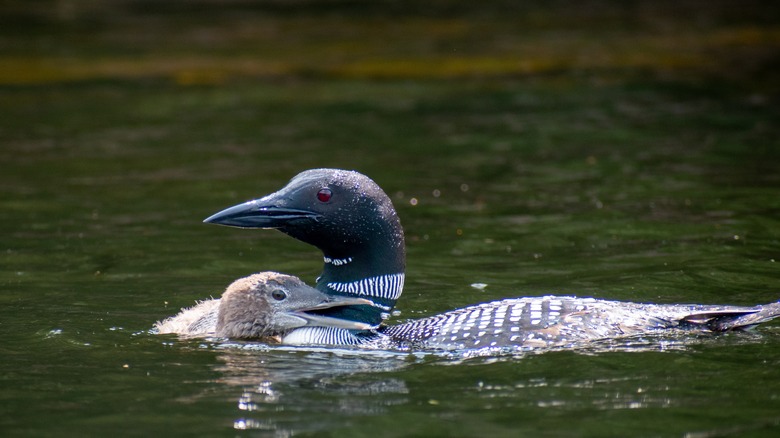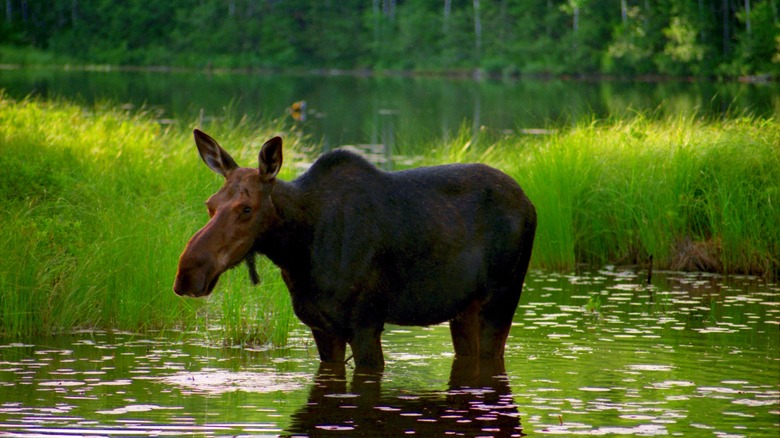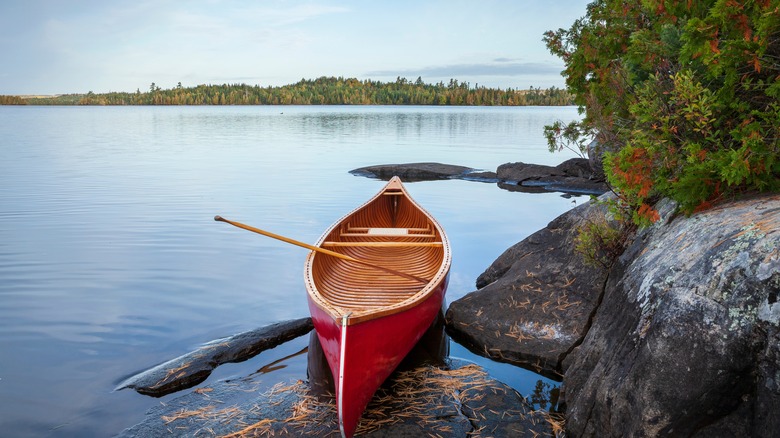Spot Tons Of Wildlife At This Remote Minnesota Wilderness With Over 1,000 Lakes And No Roads
America's national parks can be great places to escape crowds and enjoy wildlife, but if you're looking to really get into nature, make a trip to Boundary Waters Canoe Area Wilderness in northeastern Minnesota. It's more than a million acres of forest land stretching along over 100 miles of the Canadian / American border. It has over 1,000 glacial lakes amidst the forest that can be visited via a combination of 1,200 different water routes – no roads here; if you want to get around, it's got to be on the water. And as you might imagine in such a remote wilderness, wildlife thrives. Like anything in nature, it can be impossible to guarantee anything, but the wildlife spotting opportunities abound at Boundary Waters.
@harrycollinsphotography Common loons calling
One of the most well-known species that can be found here is the common loon. Their haunting, beautiful calls echo across the water, and they're most vocal during the late spring and early summer and in the morning and evening. Their "wail" calls are designed for them to communicate with each other from far away, which means you might be able to hear them without seeing them, and it's the kind of sound that will stay with you.
Boundary Waters is home to a range of animals
Loons are just one of the many bird species that you can find in Boundary Waters. The area is used by hundreds of bird species, from those that nest there to those that migrate through. You can expect to see bald eagles, hawks, geese, ducks, all kinds of woodpeckers, and more. Bring your binoculars!
As for mammals, you have a chance of seeing moose at Boundary Waters. Thousands of them live in this area, and they like the shorelines and marshes. You have more of a chance of seeing them if you keep your voice down as you paddle. You might also see river otters, beavers, and muskrats.
Then there are the predators. While you aren't likely to see one, you might hear a timberwolf howl from your campsite at night — another memorable sound from a visit to Boundary Waters. Black bears also make their homes in the forests here. But not to worry, these predators aren't all that interested in people; just keep your campsite clean, and you shouldn't have any trouble.
Some things to keep in mind about Boundary Waters
While there isn't much chance of having a negative encounter with a large animal at Boundary Waters, if you're there in summer, you'll have bugs to deal with when you're on land. Be prepared with things like bug spray, head nets, long sleeve shirts, and pants. If you're on an extended trip to Boundary Waters, you will be spending time off the water, and not just when you make camp. While the area is full of waterways, you will still have to move your canoe between the bodies of water — aka portage. So the lighter the canoe, the better. If you don't have your own, or don't want to travel with it, you can rent one from a nearby outfitter.
If you like to stand up paddleboard or kayak in the Midwest, Boundary Waters might be better for a day trip as compared to a longer adventure. Those vessels may be heavier or more unwieldy on land than a canoe, which will make portaging more challenging.
You can expect a real wilderness experience here, so make sure that you're adept on the water and with camping, especially if you're planning a multi-day trip. But that's a large part of the appeal of the area — feeling fully immersed in nature. So if you're making a road trip to Lake Superior, one of the Midwest's most stunning lakes, consider exploring the nearby Boundary Waters, especially if you love wildlife.


